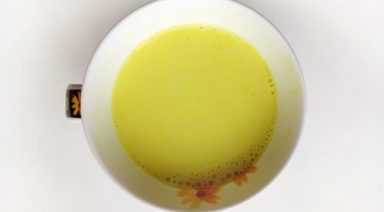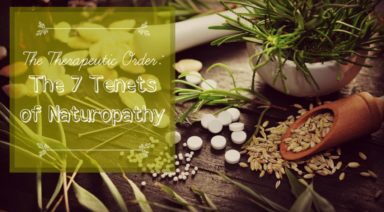Health Benefits of Castor Oil Packs: What You Need to Know

Castor oil packs have been used for centuries as a natural remedy to support overall wellness. Countless people use them for pain relief, skin health, and even to support liver function. Simply soaking a cloth in castor oil and applying it to the skin, these packs are believed to help with detoxification, reduce inflammation, and promote better digestion. While castor oil packs are a relatively simple and gentle healing tool, understanding their proper use is essential to maximizing benefits and minimizing potential side effects.
What is Castor Oil?
Extracted from the seeds of the Ricinus communis plant, castor oil has been valued for centuries across various cultures for its medicinal and industrial applications. This castor plant, native to Africa, India, and the Mediterranean region, has become one of the world’s oldest cultivated crops. The oil pulled from these seeds is rich in ricinoleic acid, a monounsaturated fatty acid believed to be responsible for many of its therapeutic properties.
Historically, castor oil’s use dates back to ancient Egypt, where it was documented in medical papyri around 1550 BCE, primarily as a laxative to relieve constipation. Over time, its applications have diversified:
- Laxative Properties: Castor oil is approved by the Food and Drug Administration (FDA) as a stimulant laxative. It works by stimulating nerves in the gastrointestinal tract and increasing bowel movements, which helps relieve occasional constipation.
- Skin Care: It serves as a moisturizer to treat or prevent dry, rough, scaly, or itchy skin and minor skin irritations.
- Wound Healing: The oil contains antibacterial and antimicrobial properties that may aid in speeding up wound healing, especially when combined with other substances.
- Anti-Inflammatory Properties: Castor oil may help reduce inflammation and possibly improve blood flow of the lymphatic system.
- Hair Care: It’s commonly used in hair products to condition and moisturize hair, promoting hair growth and overall hair health.
Castor Oil Packs
A castor oil pack is a method of external application where a cloth soaked in castor oil is placed on the skin, often accompanied by heat. This traditional remedy is believed to allow the oil to penetrate the skin more deeply, enhancing its therapeutic effects.
What Are Castor Oil Packs Used For?
Castor oil packs are utilized for various purposes, including:
- Digestive Health: They are believed to aid in relieving constipation and improving overall gut health.
- Detoxification: Some practitioners suggest that these packs support liver detoxification and enhance lymphatic drainage.
- Pain Relief: They may help reduce inflammation and alleviate pain associated with conditions like arthritis and menstrual cramps.
- Skin Conditions: Applied topically, castor oil packs can moisturize the skin and may assist in healing minor irritations.
Castor Oil Side Effects
While castor oil offers various benefits, it’s essential to be aware of potential side effects:
- Allergic Reactions: Applying castor oil to the skin may cause allergic reactions in some individuals, resulting in itching, swelling, or rashes. It’s advisable to perform a patch test before widespread use.
- Gastrointestinal Discomfort: When used as a laxative, castor oil can cause nausea, abdominal cramping, vomiting, bloating, diarrhea, and dizziness, especially if taken in excess. Consult a healthcare provider before use.
- Pregnancy Concerns: Castor oil may induce labor; therefore, pregnant individuals should avoid its use. Its safety during breastfeeding and for infants or children remains unclear.
- Medication Interactions: As a laxative, castor oil can interfere with the absorption and effectiveness of other medications.
- Overdose Risks: Excessive consumption of castor oil may lead to severe symptoms such as abdominal cramps, chest pain, diarrhea, dizziness, rash, and shortness of breath. Seek immediate medical attention if these occur.
- Toxicity to Pets: While less toxic than raw castor beans, ingestion of large amounts of castor oil can be harmful to pets. Contact a veterinarian promptly if this happens.
Importance of Consulting a Healthcare Professional
Before incorporating castor oil or castor oil packs into your health regimen, it’s crucial to consult with a healthcare professional. They can provide personalized advice, ensure that it’s safe based on your medical history, and prevent potential interactions with medications or health conditions.
How to Make and Use Castor Oil Packs
Castor oil packs are simple to prepare as a do-it-yourself (DIY) remedy at home. They involve soaking a piece of unbleached, organic wool or cotton flannel in castor oil and placing it on the skin, typically with added heat, to promote absorption and therapeutic effects.
Materials Needed:
- Hexane-free, cold-pressed castor oil
- A piece of unbleached, organic wool or cotton flannel
- Plastic wrap or a plastic bag
- A heating pad or hot water bottle
- Old clothing or towels to protect surfaces
Instructions:
- Lay an old towel on the surface where you’ll be resting to protect it from potential oil stains.
- Pour castor oil into a bowl.
- Place the flannel cloth into the bowl, ensuring it’s thoroughly soaked but not dripping.
- Place the soaked flannel onto the area you wish to treat.
- Cover the flannel with plastic wrap to prevent oil from leaking and to retain heat.
- Place the heating pad or hot water bottle over the plastic-covered flannel to warm the pack.
- Lie down comfortably and leave the pack in place for 45 to 60 minutes.
- After removing the pack, cleanse the area with a warm, damp towel to remove any residual oil.
- Store the used flannel in a sealed container in the refrigerator. It can be reused multiple times; add more castor oil as needed to keep it saturated.
Expert Claims on the Benefits of Castor Oil Packs
Renowned health experts have long advocated for the therapeutic use of castor oil packs. Dr. Christiane Northrup, a New York Times best-selling author known for her groundbreaking 1994 book “Women’s Bodies, Women’s Wisdom,” has been a dedicated advocate for women’s health for decades. She recommends castor oil packs for various medical conditions, including endometriosis—a painful condition where uterine tissue forms within the pelvis—PMS and severe monthly cramps, urinary tract infections, and ovarian cysts. Dr. Northrup advises applying castor oil packs three times a week, excluding menstruation periods, to bolster immune system health.
Similarly, Dr. Carolyn DeMarco, author of Take Charge of Your Body, suggests the application of castor oil packs for alleviating pain and swelling associated with varicose veins. She also recommends their use for liver, gallbladder, and kidney concerns, constipation, sciatica, and arthritis. Moreover, castor oil packs have been incorporated into detox regimens and utilized by cancer patients as a complementary therapy.
Incorporating castor oil packs into your wellness routine may offer various health benefits. However, it’s essential to consult with a healthcare professional before starting any new treatment to ensure it aligns with your individual needs and health issues.
All content and media on the Gaia website is created and published online for informational purposes only. It is not intended to be a substitute for professional medical advice and should not be relied on as health or personal advice.
Baking Soda and Apple Cider Vinegar: Why You'll Never Go Back to Shampoo

Surprise, surprise. Your commercial shampoo may have ingredients that could have serious repercussions on your health.
There’s a reason that hair care professionals suggest washing your hair only once or twice a week.
Flip over your bottle of shampoo. One of the main ingredients in shampoo is Sodium Lauryl Sulfate, known as SLS. Is it on the back of the label? It’s likely there because it is a detergent, degreaser and foaming agent. It’s in more than your shampoo, however; it might be in your dishwasher detergent, toothpaste, bubble bath and other foaming home products. Also check your car wash soap, garage floor cleaners, and car engine degreasers.
SLS isn’t something you want hanging around your sensitive body. Skin irritation, hormone disruption, eye irritation, and eye deformities are all known results of SLS toxicity. If that’s not enough, it’s even possibly carcinogenic when paired with some of the other typical ingredients in shampoo.
Even if you dismiss the SLS risks as nothing to be concerned about, here’s another issue you’re your shampoo. As I said, SLS is a detergent and degreaser. This means it strips your scalp of the natural oils in it. “Good!” you might declare. “I don’t want oily hair!” Not so fast: those oils are actually healthy and there for a reason. When they get stripped, your scalp dries out along with your hair. That’s where conditioner comes in, to replenish and restore the damage. However, the natural way is nearly always better, and sadly, conditioner does not stay on your hair in the same way that your natural oil would.
Thus begins a vicious cycle. Once your scalp contains less oil, it senses the need for more oils to be produced. That’s why you may notice an oily scalp after just a few days of not washing it. Your scalp is going into overdrive, overcompensating for these necessary oils.
A breakdown of what you’re probably doing right now: wash your hair, strip the oils, put fake oils to reduce the damage, your scalp gets super oily the next day as a result, so you wash it again.
What can we do to break the cycle?
You can definitely switch over to SLS-free, toxin-free shampoo, but you might notice this is a little pricey. Thankfully, there’s a cheaper solution! Grab baking soda and apple cider vinegar on your way home, as well as the little travel-size squeeze bottles found in the dollar section.
Baking Soda “Shampooing”
Baking soda is a gentle alkaline compound effective for cleansing and removing build up from your hair. The typical formula is 1 tablespoon of baking soda for every cup of water, though you might want to play with it according your hair density and texture. Fine, thin or short hair may require less.
A good method is to use an 8 oz travel size squeeze bottle. Fill it up with the water and baking soda mixed together. Shake it up to dissolve the baking soda.
In the shower, squeeze the water/baking soda mix onto your head, starting with the crown and then all over the scalp. Thoroughly work it through with my hands, scrubbing the scalp and rubbing the hair.
You may notice a remarkable difference in this experience: no lather or foam. This doesn’t mean it isn’t working, however! It is, in fact, cleaning your hair in a much gentler, more natural way.
Leave it on for a minute or two and then rise as normal.
Apple Cider Vinegar Rinse
We’ve raved about apple cider vinegar before. It’s an amazingly multi-functional, mild acidic that is useful for detangling and clarifying, balancing the pH level of your hair, and sealing the hair cuticle. Use 1-2 tablespoons of apple cider vinegar to every cup of water. For dry hair, use closer to 2 tablespoons. For oilier hair, use 1 tablespoon or less. Again, you may want to play with it to see what works best for you.
Put the required amount of ACV as well as a cup or a cup and a half of water into a reused apple cider vinegar bottle. Shake it up thoroughly.
In the shower, starting at the crown of the head, pour just a little on top. Then, pour again while scrunching up the hair at the base of the neck and concentrate most of solution towards the bottom and ends of your hair.
Wait a minute or two and then rinse it out.
Important Note:
Your hair will probably go through a transition phase lasting anywhere from 2 to 8 weeks in order for all of the chemicals to wash out, as well as restoration for proper scalp oil balance. In the transition period, your hair may be a little flatter, duller, or greasier as your scalp finds its balance. Sticking it out for the 2 to 8 weeks will be entirely worth it, however, as many testify that it’s their best hair they’ve ever had.
You also may have to play your solutions for some time to get the right balance for your specific hair situation. If your hair is too dry, use less baking soda or try rinsing with honey instead of vinegar. If your hair is too oily, use less vinegar, or try rinsing with lemon juice, or try not using a rinse at all.




































